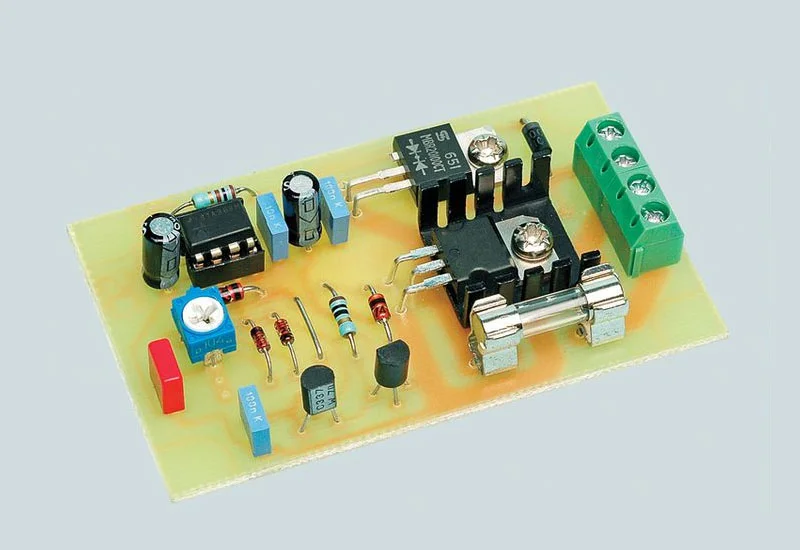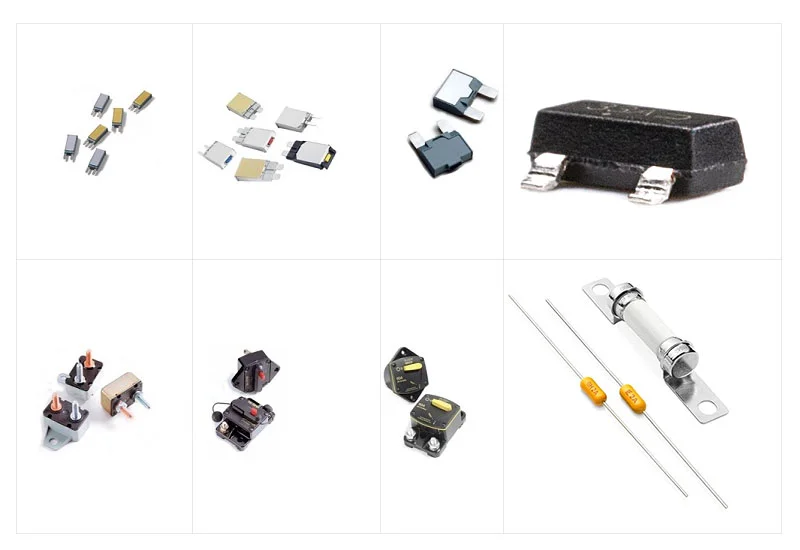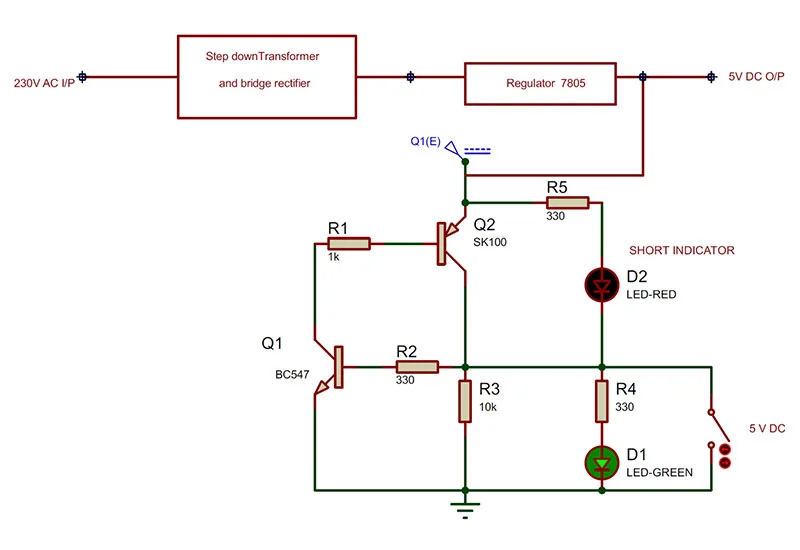At its simplest, Circuit Protection intentionally adds a ‘weak link’ in an electrical circuit.
In this article, we delve deep into the concept of circuit protection, exploring its significance, types, and practical applications.

What is Circuit Protection?
Simply put, circuit protection refers to the measures taken to prevent damage to circuits and equipment caused by various electrical faults including overcurrent, overvoltage, short circuits, and electrostatic discharge (ESD).
Employing circuit protection mechanisms, such as fuses, circuit breakers, surge protectors, and varistors, preserves the integrity and functionality of electronic systems, reducing the risk of fires, malfunctions, and equipment failures. Now, it’s clear what circuit protection entails.
Importance of Circuit Protection:
Circuit protection plays a crucial role in maintaining the reliability and safety of electrical systems. Here’s why it’s essential:
Circuit Protection Ensures Safety:
Circuit protection devices safeguard against hazardous conditions like short circuits and overloads, minimizing the risk of electrical fires and electrocution.
Circuit Protection Prevents Damage:
Circuit protection components prevent damage to sensitive electronic components by promptly interrupting abnormal currents or voltages, thereby extending the lifespan of devices.
Circuit Protection Enhances Reliability:
Minimizing downtime due to equipment failures and repairs, reliable circuit protection enhances the overall reliability of electrical systems.
Circuit Protection Complies with Standards:
Businesses and manufacturers mitigate legal and financial risks by adhering to circuit protection standards and regulations, ensuring compliance with safety requirements.
Types of Circuit Protection

Crucible Breakers:
Clarification: Devices known as crucible breakers interrupt or break the flow of current in a circuit when certain conditions are met, typically to protect the circuit from overcurrent or short circuit events.
Product Application: People commonly use them in industrial settings, power distribution systems, and electrical machinery where high currents are present and need to be safely managed.
Circuit Protection Accessories:
Clarification: Circuit protection accessories comprise various components and tools that complement or enhance the functionality of circuit protection devices. These components and tools may include mounting hardware, terminals, connectors, and labels.
Product Application: People use them across various industries and applications where circuit protection devices are installed, ensuring proper installation, maintenance, and labeling of protection systems.
Disconnect Switch Components:
Clarification: Disconnect switch components form parts of disconnect switches, which are devices used to interrupt the flow of electrical power in a circuit. These components can include handles, enclosures, and contact assemblies.
Product Application: People commonly employ disconnect switches in industrial settings, electrical distribution systems, and machinery where power needs to be isolated for maintenance or safety purposes.
Electrical, Specialty Fuses:
Clarification: Specialty fuses are types of fuses designed for specific applications or with special features such as high voltage, high current, or fast-acting characteristics.
Product Application: They are utilized in various industries including automotive, aerospace, telecommunications, and medical equipment where standard fuses may not meet the specific requirements of the application.
Fuseholders:
Explanation: Fuseholders are devices that hold fuses securely in place within a circuit. They provide electrical connections to the fuse and may include features such as mounting options and indicator lights.
Product Application: Fuseholders are found in a wide range of electronic and electrical systems including consumer electronics, automotive, and industrial equipment where fuses are used for circuit protection.
Fuses:
Explanation: Fuses are overcurrent protection devices that consist of a metal wire or element that melts when exposed to excessive current, thereby breaking the circuit and preventing damage to connected components.
Product Application: Fuses are used in virtually every electrical and electronic device, ranging from small appliances to large industrial machinery, to protect against overcurrent conditions and short circuits.
Gas Discharge Tube Arresters (Gdt):
Explanation: Gas discharge tube arresters (GDTs) are surge protection devices that use a gas-filled tube to divert excess voltage away from sensitive equipment, thereby protecting it from damage due to transient voltage spikes.
Product Application: They are commonly used in telecommunications, power distribution systems, and electronic equipment to safeguard against lightning strikes, power surges, and other transient voltage events.
Inrush Current Limiters (ICL):
Description: Inrush current limiters (ICLs) are components designed to limit the high initial current drawn by capacitive or inductive loads when power is first applied to a circuit, thereby preventing damage to components and reducing stress on the power supply.
Product Application: They are used in power supplies, motor control circuits, and electronic equipment to prevent nuisance tripping of circuit breakers and to improve the reliability and longevity of components.
Lightning Protection:
Description: Lightning protection systems are designed to protect structures and equipment from the damaging effects of lightning strikes by providing a low-resistance path for lightning current to flow safely to the ground.
Product Application: Lightning protection systems are installed on buildings, communication towers, and other structures to mitigate the risk of fire, structural damage, and equipment failure caused by lightning strikes.
PTC Resettable Fuses:
Description: PTC (Positive Temperature Coefficient) resettable fuses are devices that provide overcurrent protection by increasing resistance when current exceeds a certain threshold, effectively limiting the current flow to protect the circuit.
Product Application: They are commonly used in consumer electronics, battery packs, and automotive systems where automatic reset capability and compact size are required for circuit protection.
Surge Suppression ICs:
Explanation: Surge suppression ICs are integrated circuits designed to suppress transient voltage spikes and surges in electronic circuits by clamping or diverting excess voltage away from sensitive components.
Product Application: They are used in a wide range of electronic devices including computers, telecommunication equipment, and industrial controls to protect against voltage transients caused by lightning, ESD (electrostatic discharge), and switching events.
Thermal Cutoffs, Cutouts (TCO):
Description: Thermal cutoffs, also known as thermal cutouts, are safety devices designed to disconnect power to a circuit when the temperature exceeds a predetermined threshold, preventing overheating and potential fire hazards.
Product Application: They are used in appliances, battery packs, and electrical equipment to protect against overheating due to excessive current, ambient temperature, or fault conditions.
TVS (Transient Voltage Suppressors):
Explanation: TVS devices are semiconductor components designed to limit transient voltage spikes and surges by rapidly conducting excess current away from sensitive electronic circuits, thereby protecting them from damage.
Product Application: They are widely used in electronic systems such as computers, telecommunication equipment, and automotive electronics to safeguard against lightning-induced surges, ESD events, and voltage transients on power lines and signal lines.
Circuit Protection Basics
1. Overcurrent Protection :
Overcurrent occurs when the current flowing through a circuit exceeds its rated capacity. This can lead to overheating, equipment damage, or even fire hazards.
To prevent potential damage, we employ overcurrent protection devices such as fuses and circuit breakers to detect and interrupt excessive current flow.
2. Short Circuit Protection :
A short circuit occurs when a low-resistance path is created between two points in a circuit, resulting in a sudden surge of current.
If left unchecked, this can pose significant risks to equipment and personnel. Circuit protection devices swiftly detect and isolate short circuits, minimizing the risk of damage and ensuring the safety of the system.
3. Surge Protection :
Surges, also known as transient voltage spikes, are brief increases in voltage that can occur due to lightning strikes, power grid fluctuations, or switching operations.
To safeguard against damage and downtime, we utilize surge protection devices such as surge suppressors and lightning arrestors to divert excess voltage away from sensitive equipment.
4. Ground Fault Protection :
When current unintentionally flows from a circuit to ground, bypassing the intended path, it causes a ground fault. This situation can result in electric shocks, equipment damage, or even fires.
Ground fault protection devices, such as ground fault circuit interrupters (GFCIs), detect abnormal currents and quickly interrupt the circuit, thereby mitigating the risk of electrical hazards.
5. Thermal Protection :
Excessive heat can degrade the performance and reliability of electrical components over time.
To address this issue, we employ thermal protection devices, such as thermal cutoffs and overload relays.
These devices actively monitor temperature levels and disconnect power in case of overheating, thereby preventing damage to the system.
6. Importance of Regular Maintenance :
It’s essential to conduct regular inspections, testing, and maintenance of circuit protection systems to ensure their effectiveness and reliability.
This process involves checking for damaged components, verifying the proper operation of protective devices, and promptly addressing any potential safety concerns.
How Circuit Protection Works

Thermal Protection :
Thermal protection mechanisms, such as bimetallic strips in fuses and circuit breakers, respond to excessive heat generated by overcurrent conditions by triggering the interruption of current flow.
Magnetic Protection :
Magnetic circuit breakers trip the circuit when a fault current exceeds a predetermined threshold by utilizing electromagnetic forces, providing reliable short-circuit protection.
Voltage Clamping :
Surge protectors and varistors employ voltage clamping to limit the voltage across circuits by diverting excess energy to the ground, preventing damage to connected devices.
Sensing and Detection :
GFCIs continuously monitor the current flow in a circuit using current transformers, instantly detecting any irregularities indicative of ground faults or leakage currents.
Applications of Circuit Protection

Circuit protection is indispensable across various industries and applications:
Residential :
Homes, devices like circuit breakers, and GFCIs ensure the safety of occupants and prevent electrical fires caused by faulty wiring or overloaded circuits.
Commercial :
Commercial establishments, and surge protectors safeguard sensitive electronic equipment, such as computers and servers, from voltage fluctuations and power surges.
Industrial :
Industrial settings rely on robust circuit protection solutions to protect machinery, control systems, and production processes from electrical faults, ensuring uninterrupted operation and worker safety.
Automotive :
In automotive applications, circuit protection components shield vehicle electronics from voltage spikes, short circuits, and other electrical anomalies, enhancing vehicle reliability and safety.
Aerospace :
Within aircraft engineering, where reliability is paramount, circuit protection plays a critical role in safeguarding avionics systems and electronic components from electrical disturbances and lightning strikes.
FAQs
What are the types of circuit breakers?
The three main types are standard, GFCI, and AFCI. They vary in amp capacities and serve different areas of the home. Standard circuit breakers come in either single- or double-pole configurations.
How much does it cost to replace a circuit breaker panel?
Home Guide reports that replacing a breaker box costs an average of $1,475. Costs vary depending on factors such as the type of panel.
For example, a low-amp subpanel may cost up to $1,000, a 200-amp panel upgrade can run up to $2,500, and a 400-amp panel may cost up to $4,000. To obtain an exact quote tailored to your home, it’s best to contact an electrician.
What is a circuit breaker?
An electrical safety device known as a circuit breaker functions as a resettable fuse and essentially operates as an automatically operated electrical switch.
Its purpose is to interrupt current flow when it exceeds a safe level, thereby preventing overheating, melting, and potential fires.
Do circuit breakers need to be the same brand as the panel?
Often, breakers of one brand can fit into panels of another brand, but it’s not advisable to use them interchangeably.
Always install breakers of the correct brand in your breaker panel. Using breakers from different brands can pose dangers and may void warranties on the breaker or panel.
Conclusion
Safeguarding electrical systems from damage and hazards like fires and shocks, circuit protection employs various devices such as fuses and breakers to manage issues like overcurrent and short circuits.
Understanding and implementing measures is crucial to ensure electronic systems’ safety and reliability across industries and applications.